Victorian Landcare Magazine - Spring 2021, Issue 82
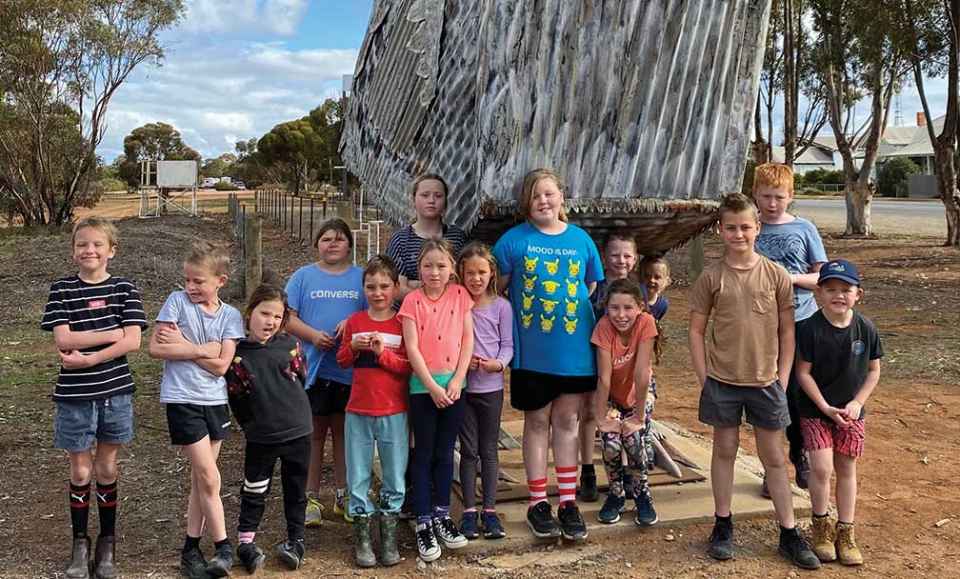
The Woolworths Junior Landcare Team Award acknowledges a school, youth organisation or young community Landcare team that contributes to raising awareness, sharing knowledge, and promoting participation of Landcare amongst young people.
Tempy Primary School (TPS) is an innovative small rural school situated between Horsham and Mildura in the far north of Victoria. The school has a family feel with just 18 students, but the commitment to conservation and sustainability runs deep.
The students have a recycling program and monitor their use of water and electricity. Shade sails and shade cloth helps cool the classrooms as much as possible. There are three resident chickens who clean up food scraps and provide eggs to the school community.
TPS has a focus on birds. Students have been involved in major mitchell cockatoo conservation where they worked with Parks Victoria at Pine Plains to collect seed and propagate slender cypress pine trees that were planted in the local parks and throughout the community.
Children from the school became concerned about the endangered local malleefowl when they observed them feeding on the edges of the highway near their homes. The students were concerned the birds would be hit by cars and wanted to alert the community to their importance.
In 2020 TPS received funding from the Victorian Malleefowl Recovery Group (VMRG) and the Mallee CMA for an education project on the endangered malleefowl. The project was auspiced by the Mallee Landcare Group Inc.
The project has seen the students become citizen scientists. They have learnt about the unique characteristics of malleefowl, one of only three mound building birds in Australia, their lifecycle, and the importance of minimising threats to ensure their survival. Students have been involved in monitoring local malleefowl and reporting their findings back to the VMRG.
TPS students have undertaken field trips to conduct their research led by VMRG volunteers who taught them how to use GPS and other field equipment. On a tour with a local Mallee tour company students discovered two active nests, learned about the diet of the bird and how to identify tracks and scats. The tour included a visit to the property of Tony and Bev Bingley, local seed collectors and conservationists, where the students helped with revegetation.
Field officers from the Mallee CMA visited TPS to discuss habitat fragmentation and landscape links and took the students to a revegetation site at Bronzewing Reserve. A Parks Victoria ranger from the local office at Speed also came to speak to students to share her knowledge of how the birds move between the local parks, private land and occasionally roadsides.
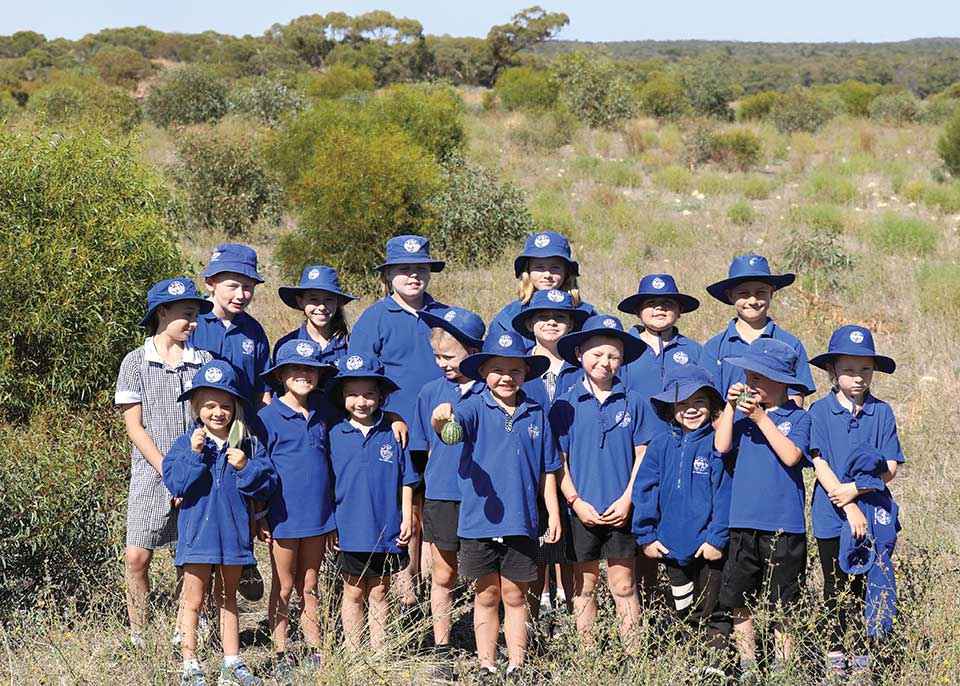
Above: Tempy Primary School learning about malleefowl at Bronzewing Reserve.
TPS students have also learnt about the connections Aboriginal people have to megapodes like malleefowl. In sessions on Aboriginal astronomy, they identified important star constellations that referred to malleefowl and Lake Tyrrell.
The project has crossed into art as well as science with TPS students designing malleefowl emblems that they presented to the VMRG. They wrote stories on malleefowl for a young writer’s anthology, several of which will be published.
The project is set to continue with the school purchasing five remote sensing cameras to monitor the birds in the local area. In their desire to protect a unique and remarkable local bird this small group of primary school students have become inspiring environmental leaders and ambassadors.
“I learnt how to tell if a malleefowl nest is working or not.” Riah, Grade Prep.
“I liked that malleefowl can lay a lot of eggs. I learnt that there are not many malleefowl left.” Zack, Grade 1.
I liked seeing the malleefowl sculptures. I learnt about how when the malleefowl are laying eggs, there is a hole in the top of the nest.” Matilda, Grade 1.
“Malleefowl get water from eating bugs. I like lerps, they taste like fairy floss.” Kingsley, Grade 1.
“I liked to plant the trees in the scrub. I learnt that when the chicks hatch only 10 per cent survive.” Zayden, Grade 2.
“Malleefowl are very interesting, because the males know the temperature of the nest, with their beak.” Baxter, Grade 3.
“When I saw my first malleefowl it was amazing and a once in a lifetime experience.” Angel, Grade 4.
“I loved to get out in the scrub, get dirty and see some wildlife. Looking at the nests was fascinating.” Abby, Grade 5.
“It was incredible! The stuff we didn’t even know about our own country’s birds!” Nardia, Grade 6.
The students at this small rural school at the end of the Wimmera River system have been asking the question how healthy is our river, for many years. Students conducted Waterwatch monitoring from 1996 to 2009 and since 2019 have been engaged in the River Detectives program.
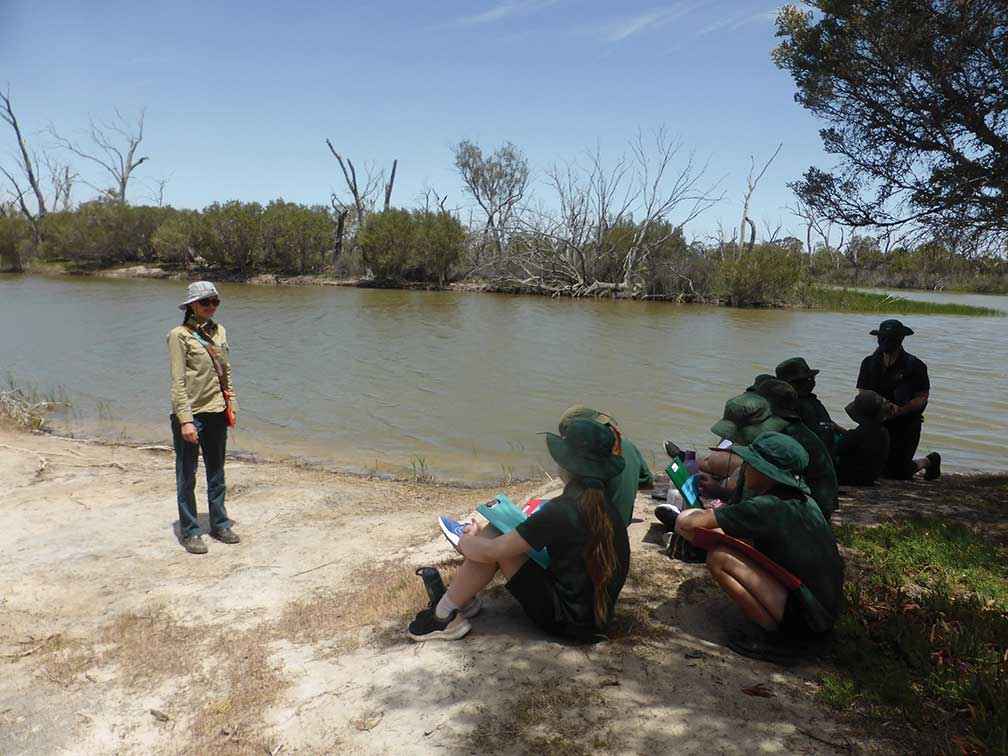
Above: Ecologist Mirinda Thorpe answers questions from Jeparit Primary School students on how
to protect their patch of the Wimmera River in November 2020.
The school community is involved in monitoring the river for water quality, salinity, turbidity, temperature, and pH. After observing riverbank erosion, exposed tree roots, lack of reeds and litter at the site the students decided to act. They learnt to identify the plants along the river, visited the regional nursery at Wail and planned and carried out a revegetation project. Despite restrictions imposed by COVID-19 the school and the community have pulled together to tackle erosion and loss of native vegetation along their patch of the river.
Newham Primary School in Victoria’s Macedon Ranges (winner of the 2019 Victorian Junior Landcare Team Award) was announced as the 2021 National Woolworths Junior Landcare Team Award winner.
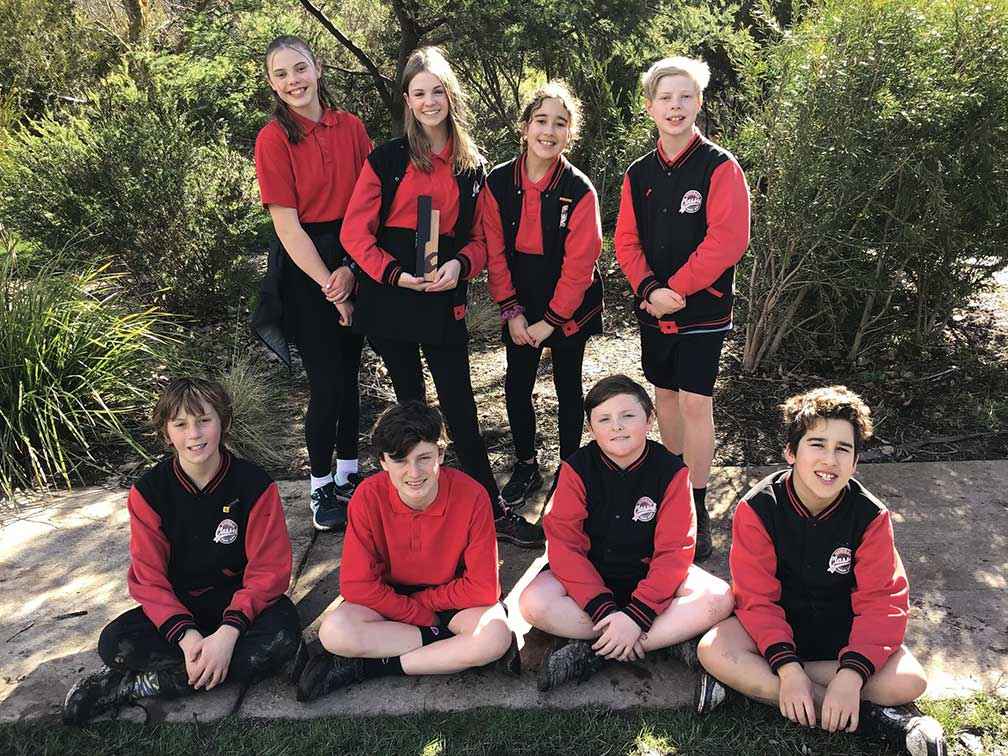
Above: Newham Primary School leaders with the 2021 National Woolworths Junior Landcare Team Award in front of a revegetation site at the school. From left standing, Minty, Tilly, Layla and Riley. From left sitting, Loki, Freddie, Harper and Zayne.
The National Landcare Awards were delayed from 2020 due to COVID-19.
The school was awarded for its work on indigenous vegetation along a tributary of Deep Creek that abuts the school, creating a nature corridor for local wildlife that connects with the Cobaw Biolink. They also designed and built a wetland to provide an alternative breeding ground for frogs which 10 southern brown tree frogs now call home.
For more information https://www.landcarevic.org.au/landcare-magazine/spring-2019/newham-primary-school/
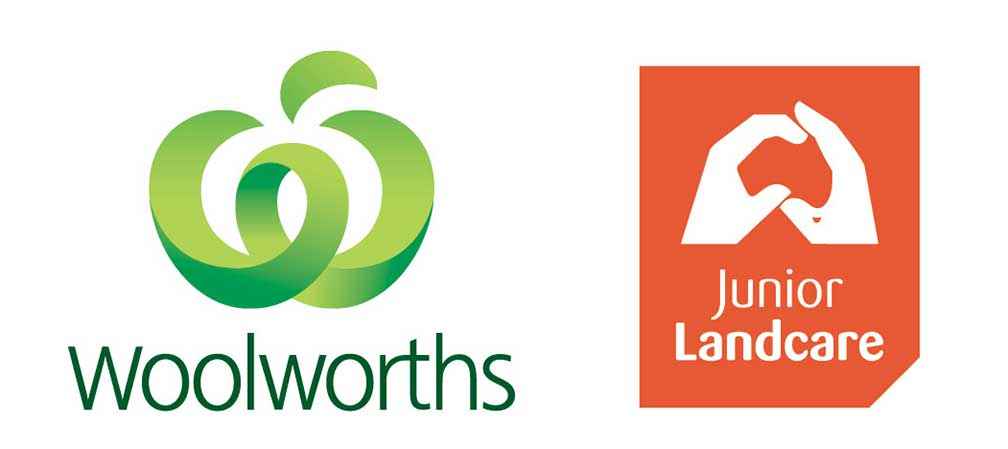
Above: Sponsor's logo for this Landcare Award